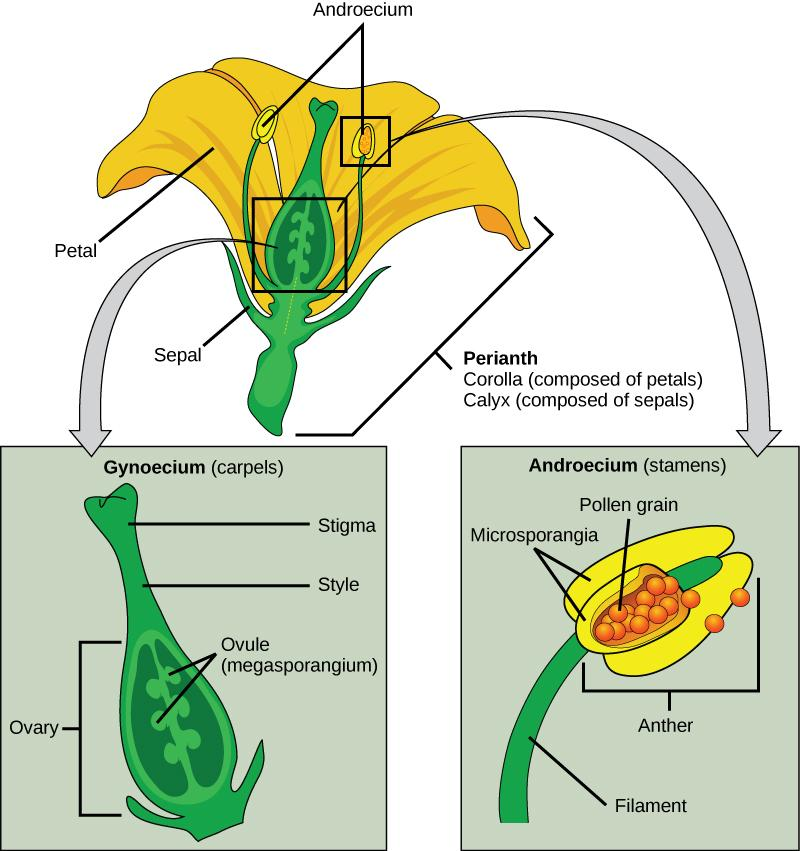
An anther with two microsporangia is found in
A. Hibiscus
B. Cucurbits
C. Legumes
D. Corianders
Answer
555.3k+ views
Hint: Microsporangia are sporangia that produce microspores, and when they germinate, male gametophytes are produced. Microsporangia occurs in all vascular plants that have heterosporic life cycles, such as seed plants, spike mosses and the aquatic fern genus Azolla.
Complete answer: Anthers are part of the stamen that produces pollen. Pistil: The part of the ovule that produces the flower. The ovary is usually elongated with a stigma on the top. Hibiscus is a genus of flowering plants in the mallow family Malvaceae. Its genus is quite large, including several hundred species native to warm, temperate, subtropical and tropical regions around the world. The member species are known for their large, showy flowers and this species is simply known as "Hibiscus" or less commonly known as pink mallow. Other names include vigorous hibiscus, carp rose, and tropical Hibiscus. This genus includes annual and perennial herbaceous plants, as well as shrubs and small trees. In Hibiscus flowers, both male and female organs are in the same flower. It has a single scapula consisting of two microsporangia which fuse at adulthood to form one theca. Heterosporous plants that produce microspores in microsporangia and megaspores in separate megasporangia evolved independently in several plant groups during the Devonian period.
Thus, option A is the correct answer.

Note: Malvaceae or mallow is a family of flowering plants which is calculated to have 244 genera with 4225 known species. Economically important items were okra, cotton, cocoa and durian. There are also several genera with famous ornamental plants such as Alcea, Malva, Lavatera and Tilia.
Complete answer: Anthers are part of the stamen that produces pollen. Pistil: The part of the ovule that produces the flower. The ovary is usually elongated with a stigma on the top. Hibiscus is a genus of flowering plants in the mallow family Malvaceae. Its genus is quite large, including several hundred species native to warm, temperate, subtropical and tropical regions around the world. The member species are known for their large, showy flowers and this species is simply known as "Hibiscus" or less commonly known as pink mallow. Other names include vigorous hibiscus, carp rose, and tropical Hibiscus. This genus includes annual and perennial herbaceous plants, as well as shrubs and small trees. In Hibiscus flowers, both male and female organs are in the same flower. It has a single scapula consisting of two microsporangia which fuse at adulthood to form one theca. Heterosporous plants that produce microspores in microsporangia and megaspores in separate megasporangia evolved independently in several plant groups during the Devonian period.
Thus, option A is the correct answer.

Note: Malvaceae or mallow is a family of flowering plants which is calculated to have 244 genera with 4225 known species. Economically important items were okra, cotton, cocoa and durian. There are also several genera with famous ornamental plants such as Alcea, Malva, Lavatera and Tilia.
Recently Updated Pages
Master Class 12 Business Studies: Engaging Questions & Answers for Success

Master Class 12 Economics: Engaging Questions & Answers for Success

Master Class 12 English: Engaging Questions & Answers for Success

Master Class 12 Maths: Engaging Questions & Answers for Success

Master Class 12 Social Science: Engaging Questions & Answers for Success

Master Class 12 Chemistry: Engaging Questions & Answers for Success

Trending doubts
What are the major means of transport Explain each class 12 social science CBSE

Which are the Top 10 Largest Countries of the World?

Draw a labelled sketch of the human eye class 12 physics CBSE

How much time does it take to bleed after eating p class 12 biology CBSE

Explain sex determination in humans with line diag class 12 biology CBSE

Differentiate between homogeneous and heterogeneous class 12 chemistry CBSE




